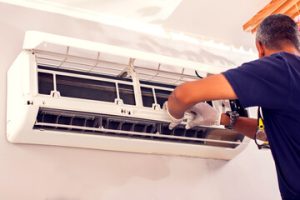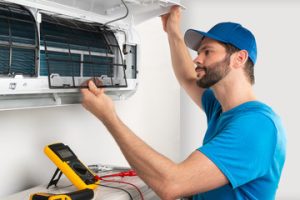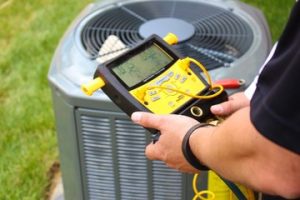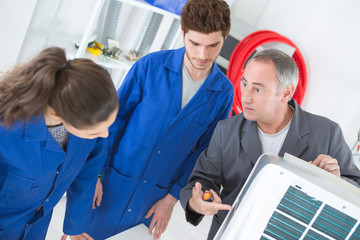Air conditioning is an essential aspect of modern comfort, especially during hot and humid months. A malfunctioning AC system can quickly turn a comfortable home or business into an uncomfortable space, affecting productivity, health, and overall well-being. While new systems are a significant investment, maintaining and repairing your existing AC is often a cost-effective solution to ensure reliable and efficient cooling. Affordable AC Repair Round Rock experts provide professional services that restore optimal performance, improve energy efficiency, and extend the lifespan of your air conditioning system. This guide explores the importance of affordable AC repair, common issues, preventive maintenance, and strategies to maximize cooling efficiency while minimizing costs.

The Importance of Professional AC Repairs
Air conditioning systems are complex, involving electrical components, compressors, evaporator and condenser coils, motors, fans, and thermostats. Each part must work in harmony to provide efficient cooling. When one component malfunctions, the system’s performance suffers, often leading to higher energy bills, uneven cooling, and discomfort.
Professional AC repair experts are trained to diagnose and resolve issues efficiently. Their expertise ensures repairs are accurate, effective, and safe. Attempting DIY fixes or relying on inexperienced technicians can lead to incomplete repairs or further damage, resulting in higher long-term costs. Affordable AC repair services offer cost-effective solutions without compromising quality, allowing homeowners and businesses to maintain reliable cooling without breaking the budget.
Timely repairs prevent minor problems from escalating. A small refrigerant leak, clogged filter, or loose belt might seem minor, but left unaddressed, these issues can damage critical components like the compressor or fan motor. Repairing problems early preserves system efficiency, reduces energy waste, and prevents costly replacements.
Common AC Problems and Their Solutions
Understanding common AC issues can help property owners identify problems early and seek professional help. Some frequent AC problems include:
- Weak or Inconsistent Airflow
- Reduced airflow often results from dirty filters, clogged ducts, or failing blower motors. Without proper airflow, cooled air doesn’t reach all parts of the home, and the system works harder to maintain temperature. Affordable AC repair experts inspect and clean filters, repair or replace faulty motors, and optimize airflow for consistent cooling.
- Refrigerant Leaks
- Low refrigerant levels reduce cooling capacity and efficiency. Leaks can also damage the compressor over time. Technicians locate leaks, repair them, and recharge the system with the correct refrigerant, ensuring optimal performance.
- Strange Noises
- Rattling, buzzing, grinding, or squealing sounds often indicate mechanical or electrical problems. Loose parts, worn belts, or failing motors are common culprits. Professional repair resolves these issues, restoring quiet operation and preventing further damage.
- Temperature Inconsistencies
- Rooms that are too hot or too cold may indicate thermostat malfunctions, blocked vents, or uneven refrigerant distribution. Technicians calibrate thermostats, adjust airflow, and repair or replace components to restore even cooling.
- Water Leaks or Ice Formation
- Condensation leaks or ice buildup on coils can signal drainage or airflow problems. Repair experts clear blockages, inspect drainage systems, and ensure proper airflow to prevent recurring issues.
- Electrical Failures
- AC systems rely on electrical components to function. Faulty wiring, blown fuses, or malfunctioning capacitors can cause system failure. Skilled technicians safely repair electrical problems, restoring reliable operation.
By addressing these problems promptly, affordable AC repair experts ensure that the system operates efficiently and reliably, preventing further inconvenience or costly breakdowns.
The Role of Skilled AC Technicians
The quality of AC repairs depends heavily on the experience and skills of the technician. Affordable AC repair experts combine knowledge, training, and advanced diagnostic tools to deliver fast and effective solutions. Their familiarity with various AC systems—central units, split systems, ductless mini-splits, and commercial setups—ensures that repairs are completed correctly the first time.
Technicians also prioritize safety. AC systems contain electrical components and refrigerants that require proper handling. Professional repair services prevent accidents, protect property, and ensure the system continues to operate safely after repair.
Benefits of Affordable AC Repair Services
Investing in professional AC repairs offers multiple advantages:
- Cost-Effective Solutions
- Affordable AC repair services provide expert solutions without the high costs associated with system replacement. Timely repairs prevent minor issues from becoming major expenses.
- Fast Restoration of Cooling
- Trusted technicians offer quick response times, ensuring homes and businesses regain comfortable temperatures with minimal disruption.
- Enhanced Energy Efficiency
- Properly repaired AC systems consume less energy, reducing utility bills while maintaining optimal cooling performance.
- Extended System Lifespan
- High-quality repairs reduce wear and tear, prolonging the life of the AC system and delaying the need for costly replacements.
- Preventive Recommendations
- Technicians identify potential future issues and suggest preventive measures, helping property owners avoid unexpected breakdowns.
- Improved Comfort
- Accurate repairs restore consistent indoor temperatures, eliminate uneven airflow, and enhance overall comfort for occupants.
Preventive Maintenance to Reduce Costs
While professional repair services are critical during breakdowns, preventive maintenance is equally important for reducing repair frequency and maintaining energy efficiency. Routine maintenance includes:
- Filter Cleaning or Replacement
- Dirty filters restrict airflow, reducing system performance and energy efficiency. Regular filter maintenance improves both cooling and air quality.
- Coil Cleaning
- Evaporator and condenser coils collect dust and debris, hindering heat exchange and reducing efficiency. Cleaning coils ensures proper cooling performance.
- Refrigerant Check
- Proper refrigerant levels prevent strain on the compressor and maintain system efficiency. Technicians detect leaks and recharge refrigerant when necessary.
- Electrical Component Inspection
- Tightening connections and examining wiring or capacitors reduces the risk of electrical failures and enhances safety.
- Thermostat Calibration
- Accurate thermostat settings prevent overcooling or undercooling, reducing energy waste.
Many affordable AC repair experts offer seasonal maintenance plans, scheduling inspections before peak cooling periods. Regular maintenance ensures the system operates at maximum efficiency, preventing costly emergency repairs.
Energy Efficiency and Cost Savings
Efficient cooling is not just about comfort—it’s also about reducing energy consumption and lowering bills. AC systems that are well-maintained and properly repaired use less electricity to achieve the desired temperature. Key factors that improve energy efficiency include:
- Fixing Refrigerant Leaks
- Proper refrigerant levels ensure effective cooling without overworking the compressor.
- Cleaning Filters and Coils
- Clean components improve airflow and heat exchange, reducing energy usage.
- Repairing Mechanical Issues
- Faulty motors, belts, or fans increase energy consumption. Repairs restore smooth operation.
- Thermostat Accuracy
- Correctly calibrated thermostats prevent unnecessary cycling, saving energy.
By addressing these efficiency factors during repair, homeowners enjoy both reliable cooling and lower utility costs.
Upgrades to Improve AC Performance
During repairs, technicians may recommend upgrades to enhance system performance, efficiency, and comfort:
- High-Efficiency Components
- Replacing older compressors, fans, or motors with energy-efficient alternatives reduces energy consumption and improves cooling.
- Smart or Programmable Thermostats
- Advanced thermostats allow for automated temperature adjustments, reducing energy waste while maintaining comfort.
- Ductwork Improvements
- Sealing leaks, insulating ducts, and adjusting airflow enhances cooling efficiency and prevents uneven temperatures.
- Air Filtration and Purification
- Upgraded filters or purification systems improve indoor air quality and support efficient AC operation.
These upgrades ensure that repaired systems not only restore comfort but also operate at peak efficiency for years to come.
Signs You Need Professional AC Repair
Homeowners should be aware of warning signs indicating that an AC system requires professional attention:
- Reduced or inconsistent cooling
- Strange noises such as grinding, buzzing, or rattling
- Water leaks or ice buildup on coils
- Frequent cycling of the system without reaching the desired temperature
- Unexpected increases in energy bills
- Unpleasant odors coming from vents
Early recognition of these signs allows homeowners to schedule affordable repairs before minor issues become major problems.
Residential Comfort and Reliability
A properly functioning AC system is essential for maintaining home comfort. Professional repair solutions ensure:
- Even temperature distribution throughout the home
- Reliable cooling during hot and humid conditions
- Improved indoor air quality for healthier living
- Lower energy consumption and reduced utility bills
- Long-term system reliability
By combining affordable repairs with preventive maintenance, homeowners can maintain a comfortable and energy-efficient indoor environment year-round.
Choosing Affordable AC Repair Experts
When selecting a repair service, consider:
- Experience and Expertise
- Technicians with extensive experience in various AC systems provide accurate repairs.
- Quick Response Time
- Prompt service is critical to restore home comfort during extreme heat.
- Quality of Parts
- Reputable providers use high-quality components to ensure lasting repairs.
- Customer Reviews
- Positive feedback indicates reliable and trustworthy service.
- Maintenance Services
- Providers offering preventive maintenance plans help reduce future repair needs and improve system efficiency.
Choosing the right affordable AC repair experts ensures that your system receives professional care without compromising on quality or budget.
Air conditioning is essential for modern home comfort, and a malfunctioning system can quickly disrupt daily life. Affordable AC repair experts provide cost-effective solutions to restore cooling, improve energy efficiency, and extend the lifespan of existing systems. Skilled technicians diagnose issues accurately, perform high-quality repairs, and offer preventive recommendations to reduce future problems.
Combining professional repairs with routine maintenance ensures consistent performance, reduces energy costs, and prevents emergency breakdowns. Upgrades such as high-efficiency components, smart thermostats, and improved ductwork further enhance system performance and reliability.
By investing in affordable AC repair services, homeowners can enjoy efficient, dependable cooling performance, improved comfort, and peace of mind throughout the year. Professional repair solutions are an investment in maintaining a comfortable, energy-efficient, and reliable home environment.


